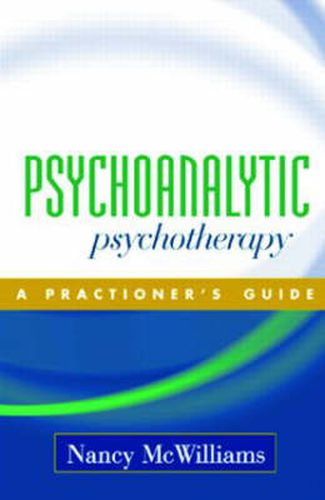Readings Newsletter
Become a Readings Member to make your shopping experience even easier.
Sign in or sign up for free!
You’re not far away from qualifying for FREE standard shipping within Australia
You’ve qualified for FREE standard shipping within Australia
The cart is loading…






Building on the enormous popularity of her two previous texts on diagnosis and case formulation, this important work from Nancy McWilliams completes the trilogy by addressing in detail the art of psychodynamic treatment. McWilliams distills the essential themes of effective clinical practice across the vast range of suffering people who need help. Drawing from her years of experience as a clinician and supervisor, the author presents complex clinical information in personal, nontechnical language enriched by clinical vignettes, making this an essential psychoanalytic work and training text for therapists. The book begins with a description of the values, assumptions, and clinical and research findings that guide the psychoanalytic enterprise. The author goes on to discuss ways both clinicians and patients can best prepare for therapeutic work. She explores in depth the substance, boundaries, stresses, and rewards of a vocation in which the therapist’s personal participation in the treatment relationship has consistently been found to be the central determinant of a client’s growth and change. Challenging the widespread belief that only healthier patients do well in psychoanalytic
$9.00 standard shipping within Australia
FREE standard shipping within Australia for orders over $100.00
Express & International shipping calculated at checkout
Building on the enormous popularity of her two previous texts on diagnosis and case formulation, this important work from Nancy McWilliams completes the trilogy by addressing in detail the art of psychodynamic treatment. McWilliams distills the essential themes of effective clinical practice across the vast range of suffering people who need help. Drawing from her years of experience as a clinician and supervisor, the author presents complex clinical information in personal, nontechnical language enriched by clinical vignettes, making this an essential psychoanalytic work and training text for therapists. The book begins with a description of the values, assumptions, and clinical and research findings that guide the psychoanalytic enterprise. The author goes on to discuss ways both clinicians and patients can best prepare for therapeutic work. She explores in depth the substance, boundaries, stresses, and rewards of a vocation in which the therapist’s personal participation in the treatment relationship has consistently been found to be the central determinant of a client’s growth and change. Challenging the widespread belief that only healthier patients do well in psychoanalytic